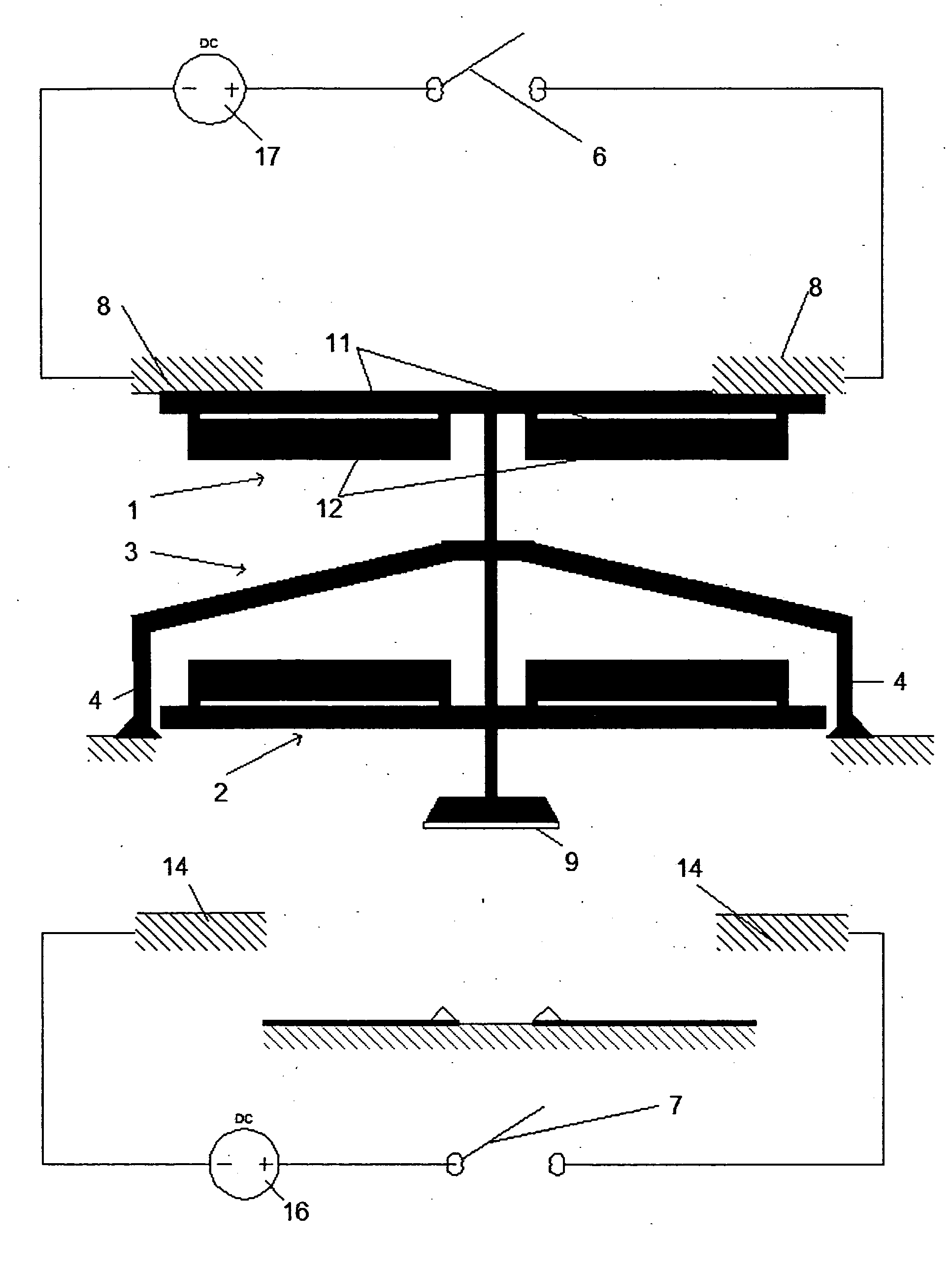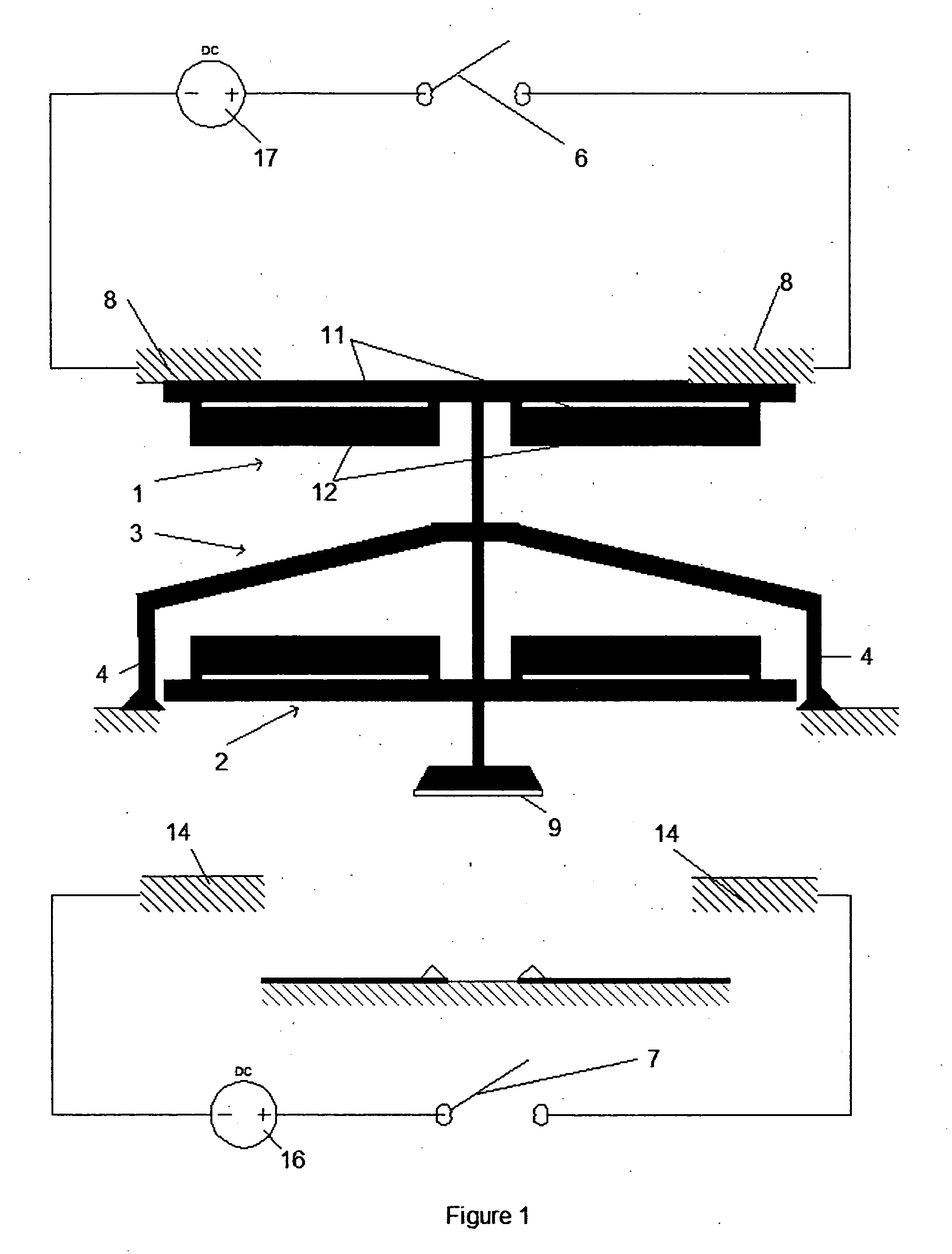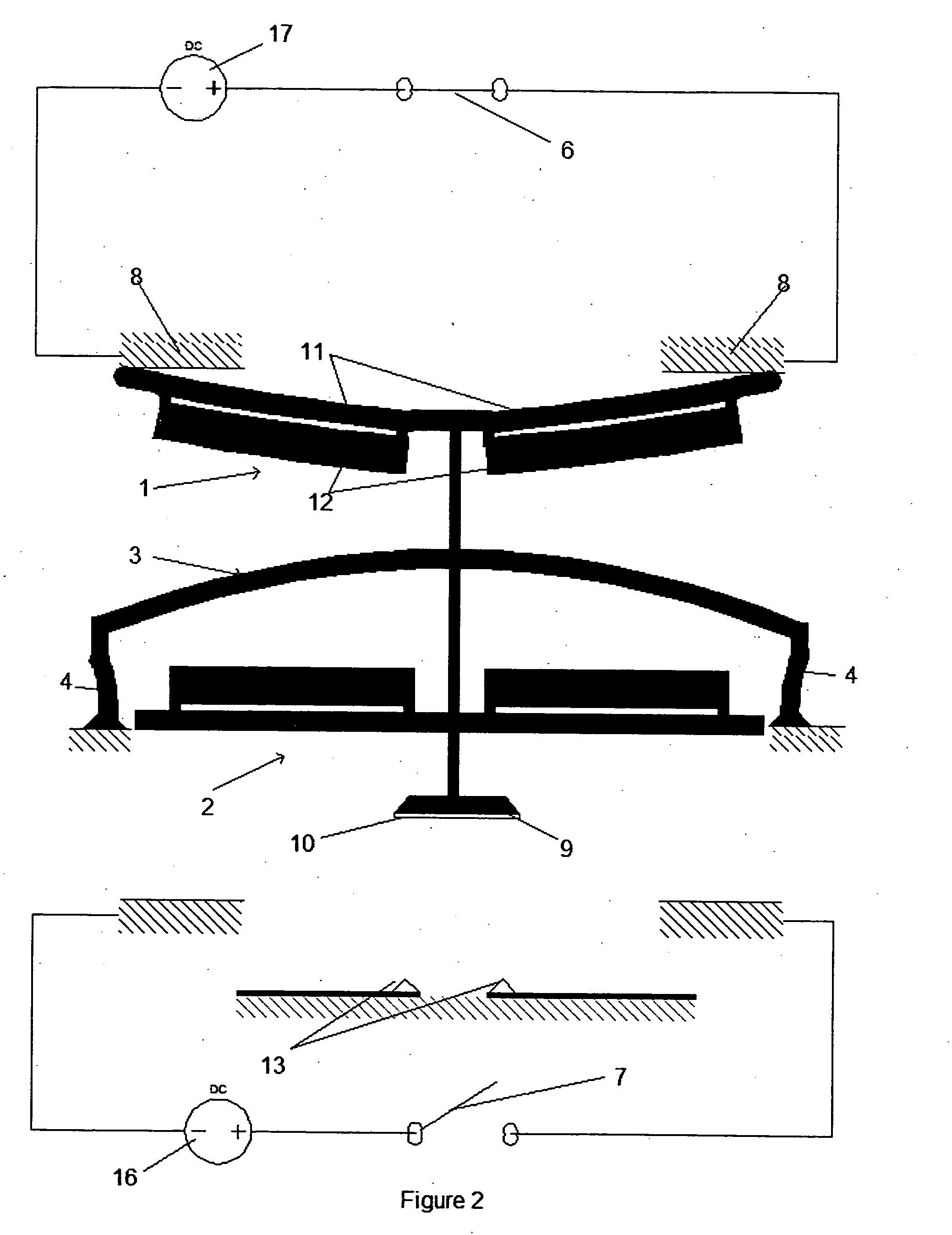MEMS switch with bistable element having straight beam components
a technology of bistable elements and switches, applied in thermal micromechanical switches, contacts, instruments, etc., can solve the problems of falling dramatically short of the rf power level, inherently unstable movement between, and potentially low cost of the devi
- Summary
- Abstract
- Description
- Claims
- Application Information
AI Technical Summary
Benefits of technology
Problems solved by technology
Method used
Image
Examples
first embodiment
[0041] FIGS. the 1-4 show the switch at four stages of switching from one stable state to the alternate stable state. Referring to FIG. 1, the switch starts out in stable state 1. The switch contact means 9 cooperating with the bistable element 3 closes signal contacts 10 in the UP position. The MEMS switch structure as shown consists of ETC actuators 1 and 2 and bistable element 3 which is attached to the substrate through compliant supports 4. Compliant supports 4 also keep the bistable element 3 in the “up” position when electrical switches 6 and 7 are open. The bistable element remains in the up position when no force is applied to it because the element is unstressed along its length, and movement downward requires the bistable element 3 to be urged to move to an increased energy level. ETC actuator 1 rests against fixed supports 8. Fixed supports 8 also-are connected to voltage source 17 via switch 6.
[0042] Referring to FIG. 2, the start of actuation occurs with the closure of...
second embodiment
[0045] FIGS. the 5-7 show the switch at three stages of switching from one stable state to the second stable state. Referring to FIG. 5, the switch starts out in stable state 1. The switch consists of ETC actuators 1 and 2 and bistable element 3. The bistable element 3 is attached to the substrate through compliant supports 4. Compliant supports 4 also keep the bistable structure 3 in the “up” position when electrical switches 6 and 7 are open. ETC actuator 1 is attached to the substrate by fixed supports 8. ETC actuator 1 also is connected to voltage source 17 via switch 6. ETC actuator 2 is attached to the substrate by fixed supports 14. ETC actuator 2 also is connected to voltage source 16 via switch 7. When the switch structure is in the first stable state, switch contact means 9 shorts signal contacts 10. When the switch structure is in the second stable state, switch contact means 9 shorts signal contacts 13.
[0046] Referring to FIG. 6, the start of actuation occurs with the cl...
PUM
 Login to View More
Login to View More Abstract
Description
Claims
Application Information
 Login to View More
Login to View More - R&D
- Intellectual Property
- Life Sciences
- Materials
- Tech Scout
- Unparalleled Data Quality
- Higher Quality Content
- 60% Fewer Hallucinations
Browse by: Latest US Patents, China's latest patents, Technical Efficacy Thesaurus, Application Domain, Technology Topic, Popular Technical Reports.
© 2025 PatSnap. All rights reserved.Legal|Privacy policy|Modern Slavery Act Transparency Statement|Sitemap|About US| Contact US: help@patsnap.com



